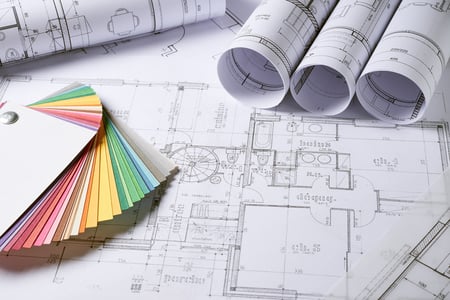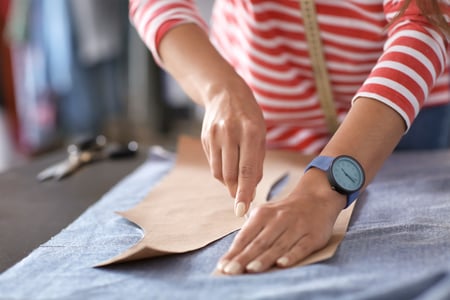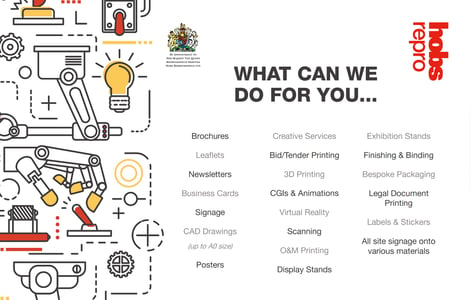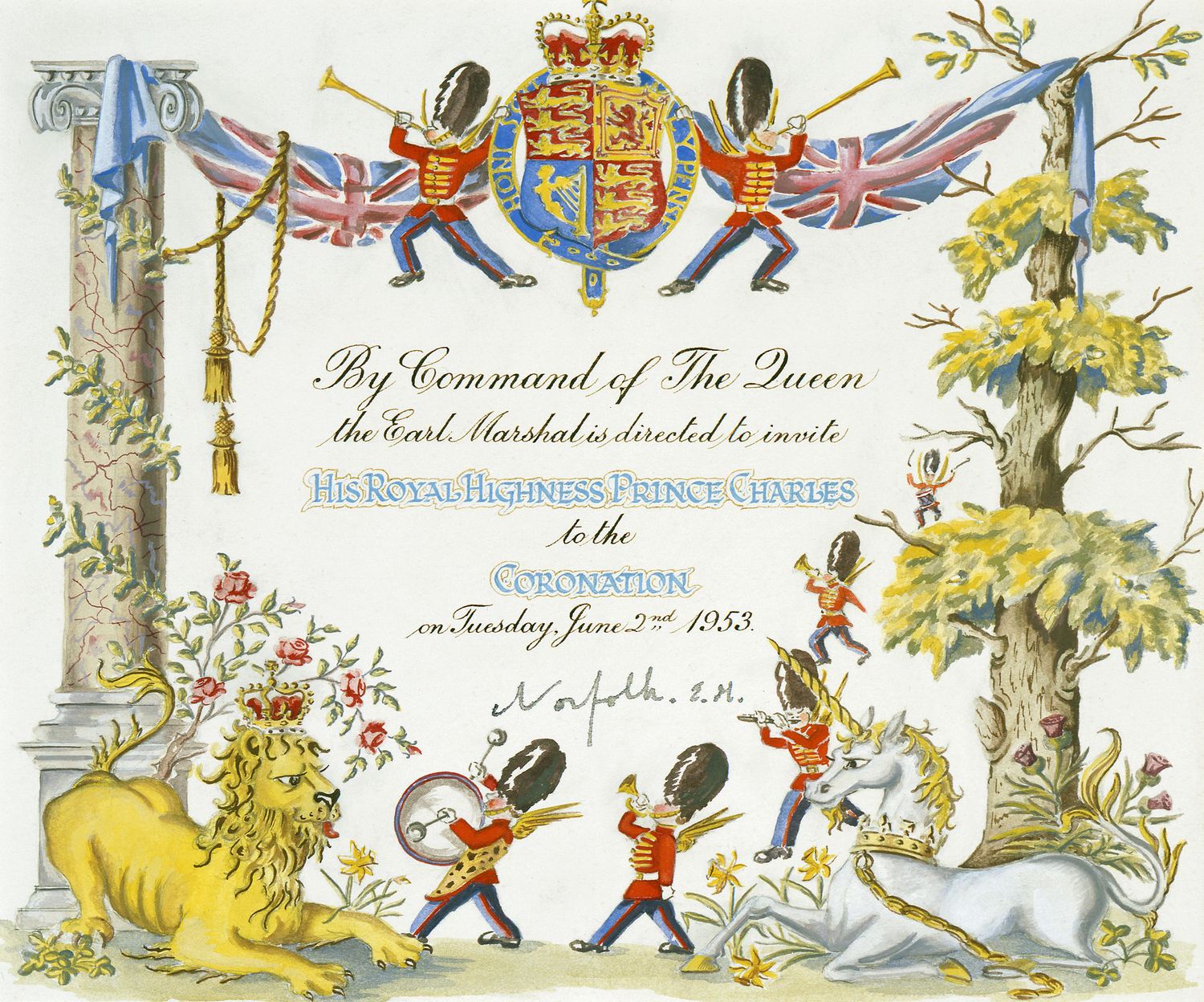A brief history of coronation invitations
3 May 2023
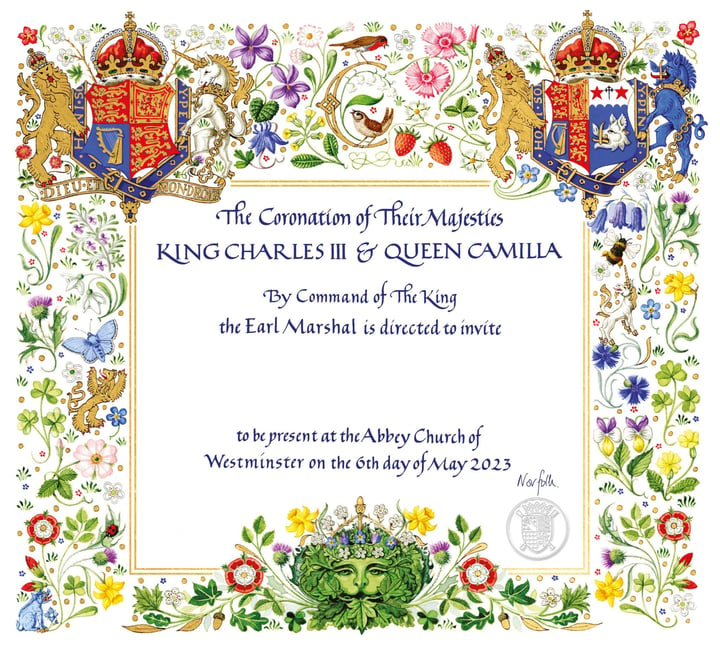
The production and distribution of royal coronation invitations also hold a special place in the traditions surrounding this significant event. The practice of issuing invitations to attend a royal coronation dates back centuries. During this time, the process of printing and distributing these invitations has undergone many changes, reflecting the evolution of technology and communication.
So, what is the brief history of coronation invitations?
The first recorded invitation for a coronation event was during the reign of King Henry IV in 1399. The invitation was sent to foreign dignitaries and nobles, requesting their attendance at the coronation ceremony. The invitation was handwritten and personally delivered by a royal messenger.
Over the centuries, the process of issuing invitations for royal coronations became more organised and formalised. In the 18th and 19th centuries, it was common for invitations to be printed on vellum or parchment, with intricate designs, elaborate calligraphy, and decorated with the royal coat of arms. They were typically issued by the Lord Chamberlain's Office, an important department within the royal household responsible for various ceremonial and administrative dutiesThe invitations were then hand-delivered by specially appointed messengers to various dignitaries, officials, and other important individuals, including members of the royal family, foreign monarchs, and heads of state.
As printing technology became more advanced, the process of issuing coronation invitations also changed. During the reign of Queen Victoria, for example, the Lord Chamberlain's Office began to use printing presses to produce invitations. These early printed invitations were often embellished with gold leaf and decorative borders, and were sent out to a wider range of recipients.
 This green document was for the coronation of Queen Victoria in 1837. It featured a blind embossed seal from the Earl Marshall of England and was nine inches by six inches in size. It read: ''The Coronation of Her Most Sacred Majesty VR / Admit Mifo Gordon into Westminster Abbey, Lower Choir Gallery, North Lido."
This green document was for the coronation of Queen Victoria in 1837. It featured a blind embossed seal from the Earl Marshall of England and was nine inches by six inches in size. It read: ''The Coronation of Her Most Sacred Majesty VR / Admit Mifo Gordon into Westminster Abbey, Lower Choir Gallery, North Lido."
Over time, the production of printed invitations became more sophisticated and elaborate. For the coronation of King Edward VII in 1902, for example, the invitations were printed in full colour and included a portrait of the king. The invitations were also sent out in specially designed boxes, which were themselves considered to be valuable souvenirs of the event.
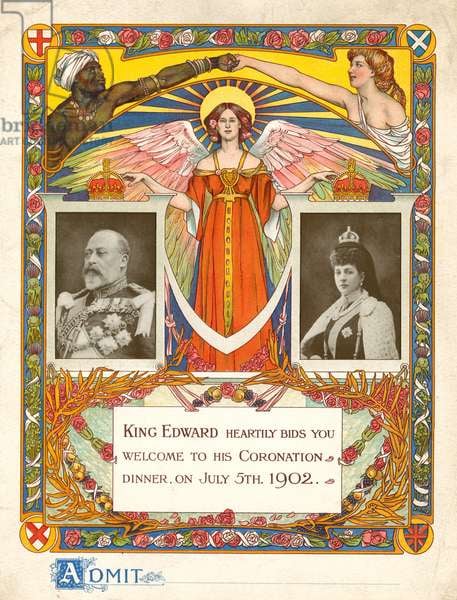
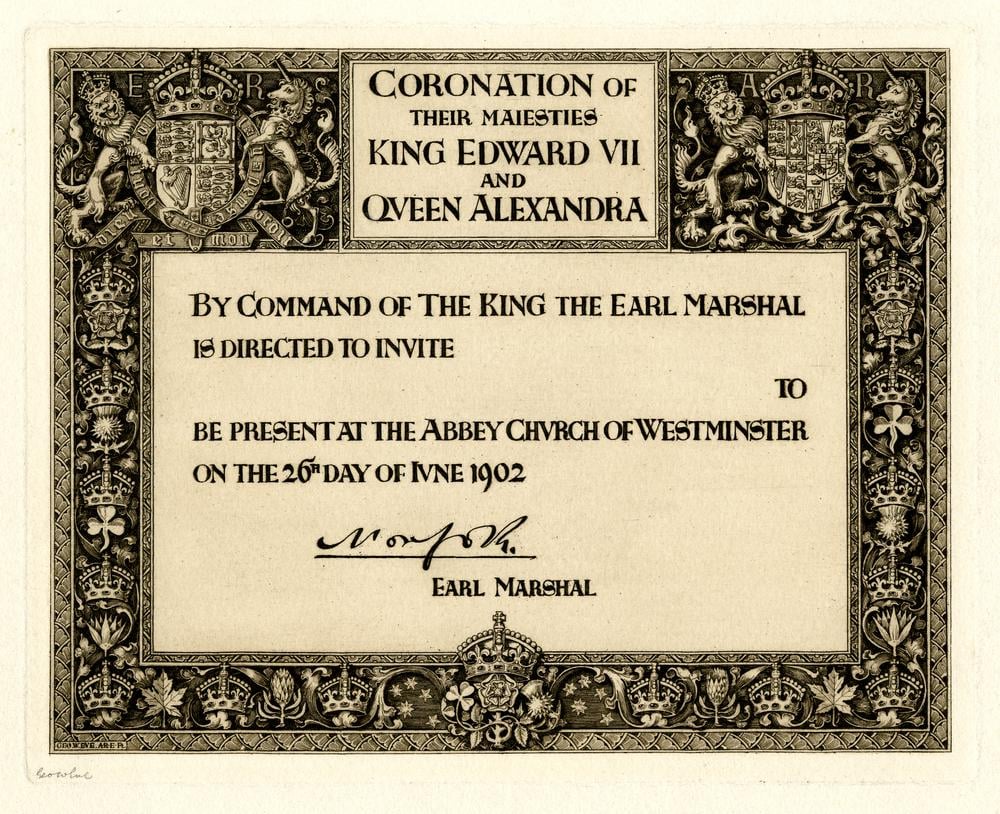 The invitation to the coronation of King Edward VII and Queen Alexandra at Westminster Abbey on 26th June 1902. The invite is framed with decorative crowns, roses, daffodils, shamrocks and thistles. Royal arms featuring the King and Queen's initials grace the top corners.Edward VII fell ill in late June of 1902, and the coronation was postponed until 2 August, making this invitation obsolete.
The invitation to the coronation of King Edward VII and Queen Alexandra at Westminster Abbey on 26th June 1902. The invite is framed with decorative crowns, roses, daffodils, shamrocks and thistles. Royal arms featuring the King and Queen's initials grace the top corners.Edward VII fell ill in late June of 1902, and the coronation was postponed until 2 August, making this invitation obsolete.
The production and distribution of royal coronation invitations continued to evolve throughout the 20th century. By the time of Queen Elizabeth II's coronation in 1953, for example, invitations were being printed on specially designed cards with decorative borders and illustrations. The invitations were also accompanied by detailed information about the ceremony and the participants, as well as travel arrangements for those attending.
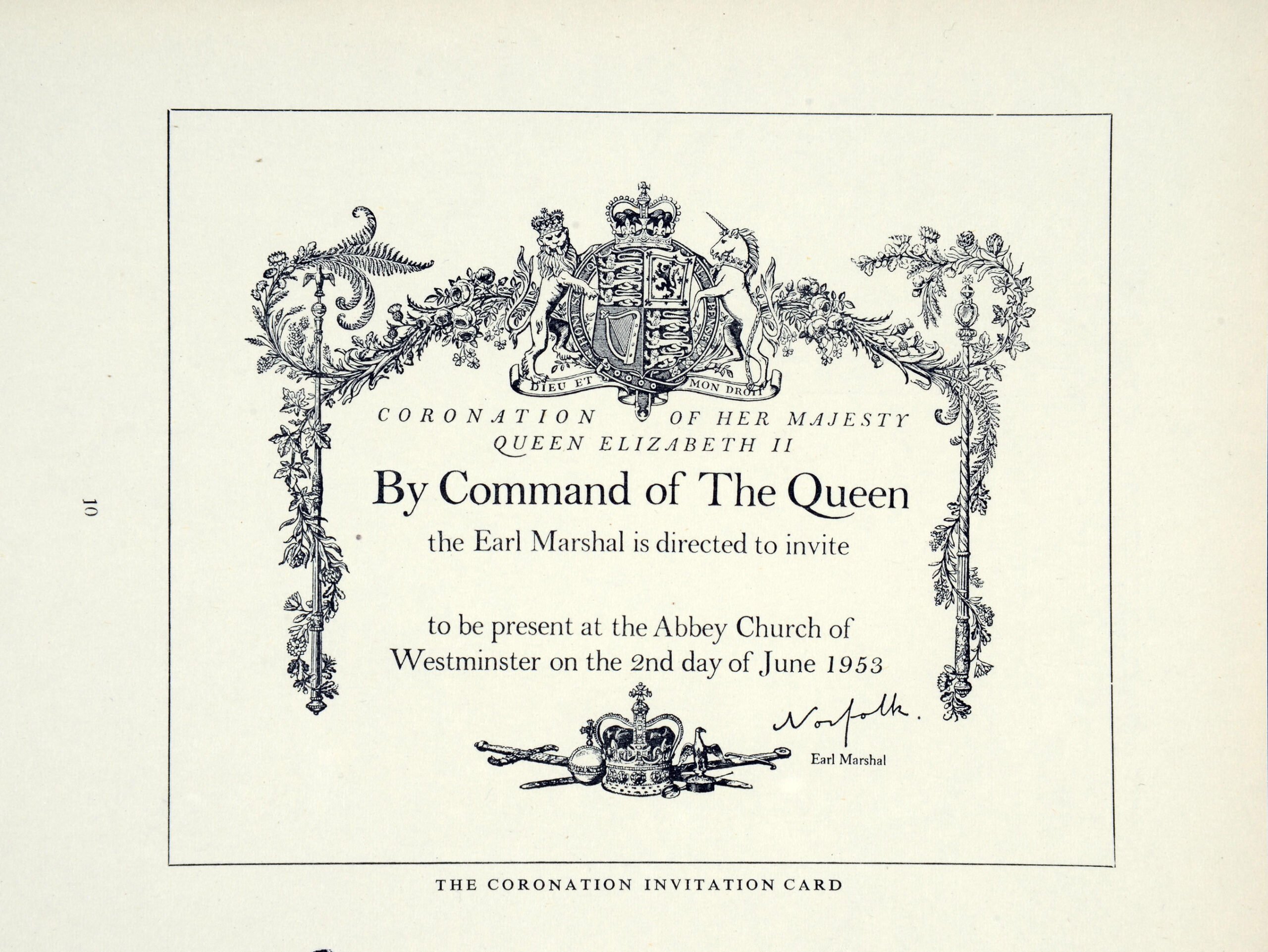
Queen Elizabeth II's coronation took place in Westminster Abbey on 2nd June 1953. The invitation was designed by illustrator and wood-engraver, Miss Joan Hassal, R.I. The lettering was done by Mr S.B. Stead who was the official Artist and Scribe for the Queen's Stationery Office.
After the death on 6 February 1952 of King George VI, Prince Charles’s grandfather, his mother was proclaimed Queen Elizabeth II and Prince Charles became heir apparent with the title of Duke of Cornwall and six titles in the Scottish peerage. The Coronation ceremony took place on 2 June the following year. The 4-year-old Prince Charles received his own specially illustrated invitation.
Check out Country Living's great article on the history of different invitations.
Today, the practice of issuing printed invitations to royal coronations has largely been replaced by electronic communications. However, this has not diminished the importance of these events, or the special significance attached to receiving an invitation to attend. The tradition of issuing coronation invitations remains an important element of British royal ceremonial, reflecting the long and rich history of this institution.
You can find a more detailed description of King Charles' and The Queen Consorts Coronation Invitation here.
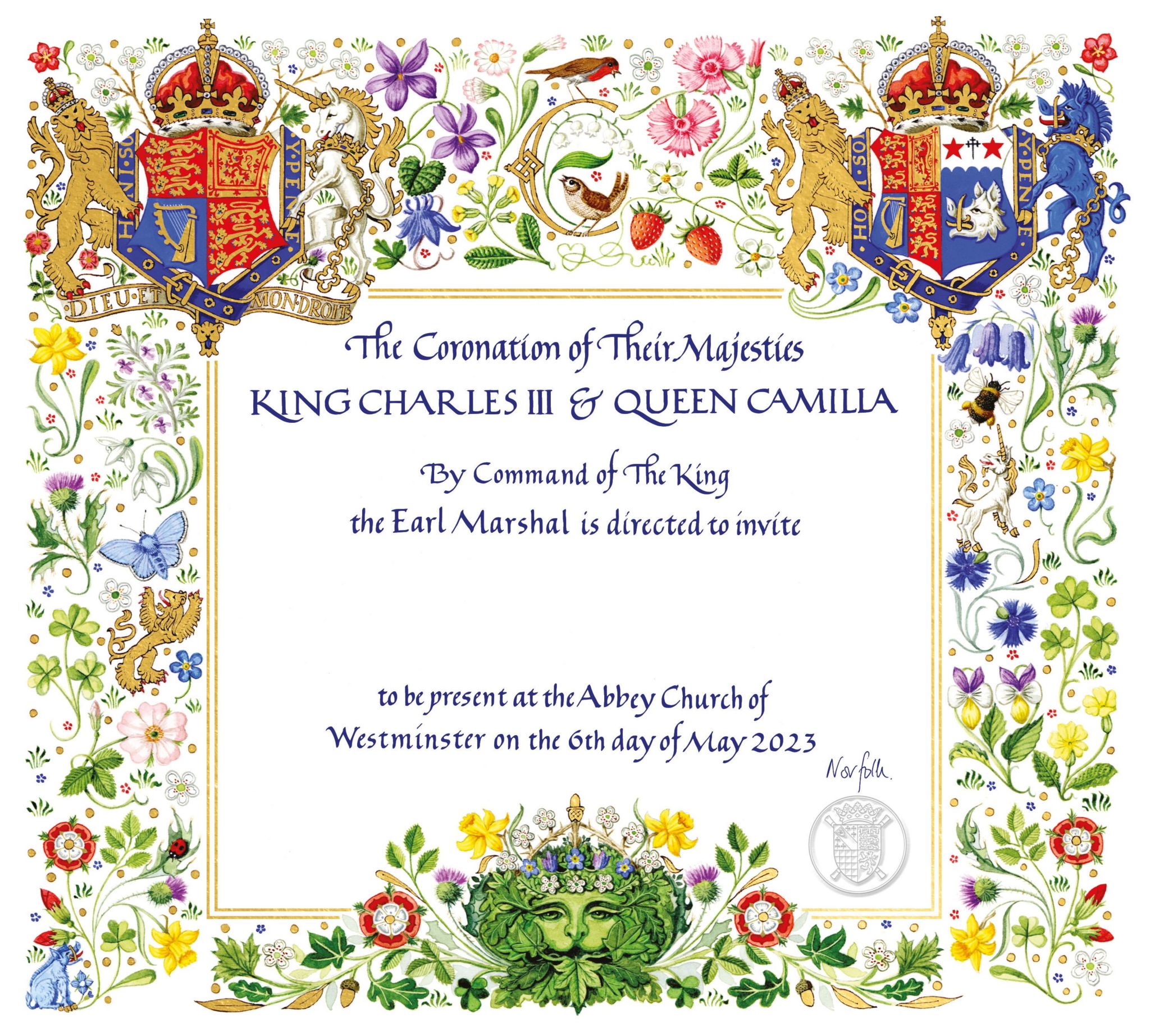 The invitation for the Coronation has been designed by Andrew Jamieson, a heraldic artist and manuscript illuminator whose work is inspired by the chivalric themes of Arthurian legend. Mr Jamieson is a Brother of the Art Workers’ Guild, of which The King is an Honorary Member.
The invitation for the Coronation has been designed by Andrew Jamieson, a heraldic artist and manuscript illuminator whose work is inspired by the chivalric themes of Arthurian legend. Mr Jamieson is a Brother of the Art Workers’ Guild, of which The King is an Honorary Member.
The production and distribution of printed materials for royal coronations, such as programs and invitations, have been an integral part of the tradition and history of these events. From the handwritten invitations of King Henry IV's reign to the sophisticated designs of today, the printing technology used has reflected the advancements made over time. Despite the decline of print media and use of physical invitations, the significance of these materials remains and continues to be an important element of British royal ceremonial. The tradition of issuing coronation invitations and programs holds a special place in the history of the British monarchy, reflecting the long and rich history of this institution.
Get in touch if you need invitations, plans, sewing patterns, posters or anything else printed!
